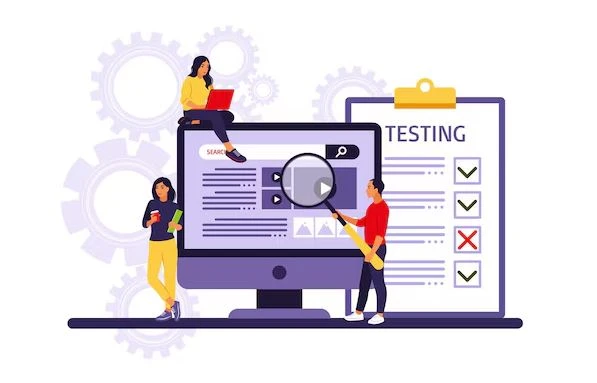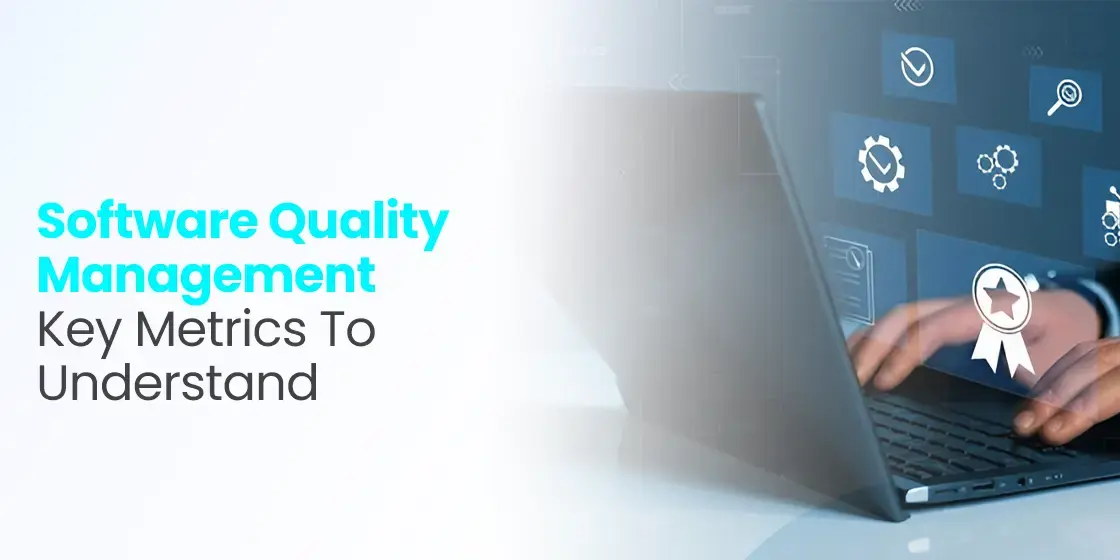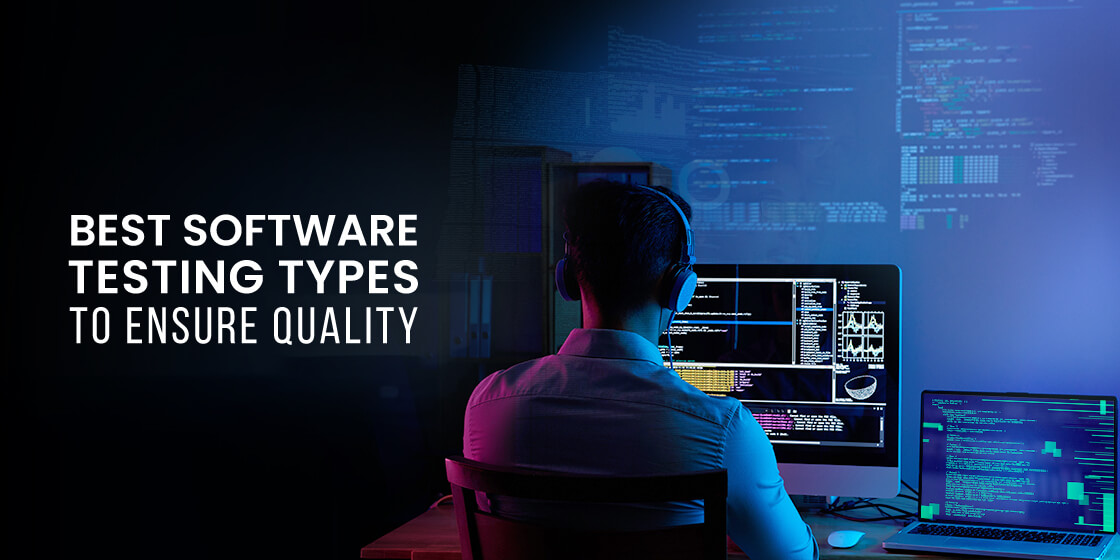Table of Content
Learn the Fundamentals of Software Quality Management Below
Developing a software doesn’t mean to just write code and deploy product at the end of the SDLC cycle. It also needs to check and maintain the quality of the product that is built to facilitate a variety of customers. This is called software quality management and it is considered an integral part of the SDLC cycle. Without ensuring the quality of software, moving forward to the deployment phase is strictly prohibited. It is a practice followed by many software development services, as all of them know how important quality assurance is for client projects.
The process of QA management ensures to undertake software through a calibrated checks of speed, efficiency and performance. By looking into these metrics, development teams ensure whether the end product is good enough for deployment or not. It is an important practice because it allows to evaluate the performance and working capacity of any software before the public roll out phase. That is how early detection of errors or bugs becomes easy, allowing teams to take respective measures timely.
If you want to learn more about software quality management, as how its done and what type of metrics are involved in it, read this article in detail. Let’s first take a look what QA management is and why it is termed important for quality software development.
What is Software Quality Management?

Software Quality Management (SQM) is a structured approach to overseeing and improving the quality of software throughout its development lifecycle. It involves implementing processes, standards, and methodologies to ensure that software products meet predefined quality benchmarks. By integrating SQM practices, organizations can systematically monitor software performance, identify defects early, and enhance overall reliability.
A key objective of SQM is to align software development with user expectations and industry standards. This involves conducting rigorous testing, quality assurance activities, and continuous improvement measures. Through detailed documentation and adherence to best practices, SQM ensures that the final software product is functional, user-friendly, and free from critical errors. It also helps in maintaining compliance with regulatory requirements and industry guidelines.
Additionally, SQM plays a crucial role in optimizing development cycles by minimizing rework and inefficiencies. By detecting and addressing quality issues early in the process, organizations can significantly reduce time-to-market and development costs. Effective SQM strategies lead to increased customer satisfaction, improved software maintainability, and a more streamlined development workflow, ultimately contributing to a company’s long-term success.
Importance of Software Quality Management

The primary goal of software quality management is to develop software that not only meets but surpasses end-user expectations in terms of quality, performance, and reliability. This involves a systematic approach to ensuring that every aspect of the software, from functionality to user experience, aligns with high-quality standards. SQM focuses on identifying potential defects, minimizing errors, and enhancing the overall effectiveness of the software before it reaches the end user.
To achieve this, SQM implements a strategic balance between user expectations and development requirements. It involves thorough planning, continuous monitoring, and adherence to industry best practices. Organizations must consider factors such as usability, security, and scalability while ensuring compliance with legal and industry-specific guidelines. This process includes rigorous testing, documentation, and validation to confirm that the software performs as intended under different conditions.
Furthermore, SQM is not just about meeting basic functional requirements but also about continuous improvement and optimization. By integrating quality management practices, companies can enhance efficiency, reduce costly rework, and maintain a competitive edge in the market. Effective SQM ensures that software remains reliable, user-friendly, and adaptable to evolving technological and business needs, ultimately leading to greater customer satisfaction and long-term success.
Key Features of Software Quality Management

Having some important features like control and planning, software quality management allows teams to roll out products with complete confidence. These activities help them to organize the whole project professionally without compromising anything in particular. For starters, here are some of the core features of SQM defined below.
Quality Assurance
Quality assurance is a systematic process within quality management that ensures a product or service meets the expectations set by customers and regulatory bodies. It involves the implementation of well-defined procedures, policies, and best practices to oversee the production or development process. By incorporating proactive measures, quality assurance helps identify and resolve potential issues before they affect the final output, ensuring that the product or service aligns with predefined quality benchmarks.
A key aspect of quality assurance is evaluating whether a product or service will satisfy customer needs and expectations. This is achieved through continuous monitoring at various stages of production. Organizations utilize structured frameworks such as ISO standards, Six Sigma, and Total Quality Management (TQM) to enhance software quality assurance processes. These methodologies enable businesses to establish clear quality objectives, conduct systematic inspections, and implement corrective actions to maintain high standards.
Beyond meeting customer expectations, quality assurance also plays a vital role in maintaining consistency and reliability. It minimizes defects, reduces operational risks, and improves overall efficiency by fostering a culture of continuous improvement. By ensuring that products and services meet regulatory compliance and industry best practices, organizations can enhance customer trust, strengthen brand reputation, and achieve long-term success in competitive markets.
Fuel innovation by leveraging bespoke software solutions. Get in touch with our team of experts to build cutting-edge software products.
Get a QuoteQuality Planning
Quality planning is the foundational phase in the software development lifecycle where a structured blueprint is created to ensure that the final product meets the desired quality standards. This process involves defining quality objectives, identifying key performance indicators, and establishing guidelines that will govern the development process. By setting clear expectations from the outset, quality planning helps align the project with both customer requirements and industry best practices.
A critical component of quality planning is determining the appropriate strategies, tools, and methodologies that will be used to achieve and maintain software quality. This includes selecting software testing tools, establishing coding standards, and defining review and validation procedures. Additionally, teams must assess compliance requirements, scalability considerations, and security measures to ensure that the software is robust, reliable, and fit for its intended purpose.
Beyond just setting initial guidelines, quality planning also involves continuous evaluation and adjustment to accommodate changes in project scope. By integrating quality planning into the broader project management framework, organizations can streamline development efforts, minimize costly defects, and enhance overall efficiency. A well-executed quality planning phase not only results in a high-quality end product but also fosters long-term customer satisfaction, regulatory compliance, and business success.
Quality Control
Quality control in Software Quality Management is the process of ensuring that a software product meets predefined quality standards and performs as expected. It involves systematic testing, reviews, and inspections to detect and address defects before the product is released. By applying various validation techniques, such as functional testing, performance testing, and security assessments, quality control ensures that the software is reliable, user-friendly, and free from critical errors.
A key aspect of quality control is the identification and correction of defects throughout the software development lifecycle. This involves executing test cases, analyzing code, and performing audits to verify compliance with specifications. Automated and manual testing methods help detect inconsistencies, usability issues, or performance bottlenecks. Additionally, quality control ensures that software aligns with industry standards, reducing the likelihood of post-deployment failures.
Beyond just detecting issues, quality control focuses on continuous improvement by gathering feedback and refining development processes. By leveraging metrics and defect-tracking systems, teams can analyze patterns in software defects and implement corrective actions to prevent recurring issues. This proactive approach enhances software maintainability, and improves overall user satisfaction. Ultimately, effective quality control is essential for delivering a polished, high-performing software product that meets both technical and business objectives.
Frequently Asked Questions
| What is software quality management? Software Quality Management is the process of ensuring that software meets defined quality standards through systematic planning and control activities. It focuses on minimizing defects, improving reliability, and optimizing development efficiency. |
| What is the importance of quality management in software development? Quality management in software development ensures that the final product is reliable, secure, and meets user expectations. It enhances efficiency, regulatory compliance, and customer satisfaction, leading to long-term success. |
| What are the softwares used in SQA? Software used in SQA includes testing tools like Selenium, JUnit, TestNG, and Postman for automation and functional testing. Additionally, CI/CD tools like Jenkins and GitLab CI/CD help streamline testing and integration processes. |
Final Words
That concludes our entire article in which we have discussed some key basics of software quality management. Since SQM is a key part of the software development lifecycle, the testing processes included in this phase should be planned meticulously. Knowing about these traits is quite important because they allow you to strategize the whole SQM process effectively. This blog has defined all the basics related to software quality management clearly, so that you can plan and manage this whole phase appropriately.
Empower your digital initiatives with BariTechSol, a premier custom software development company. Our skilled team tailors cutting-edge solutions to your unique needs. Elevate your tech experience and stay ahead in the digital realm. Partner with BaritechSol and code the success of your next big idea.


